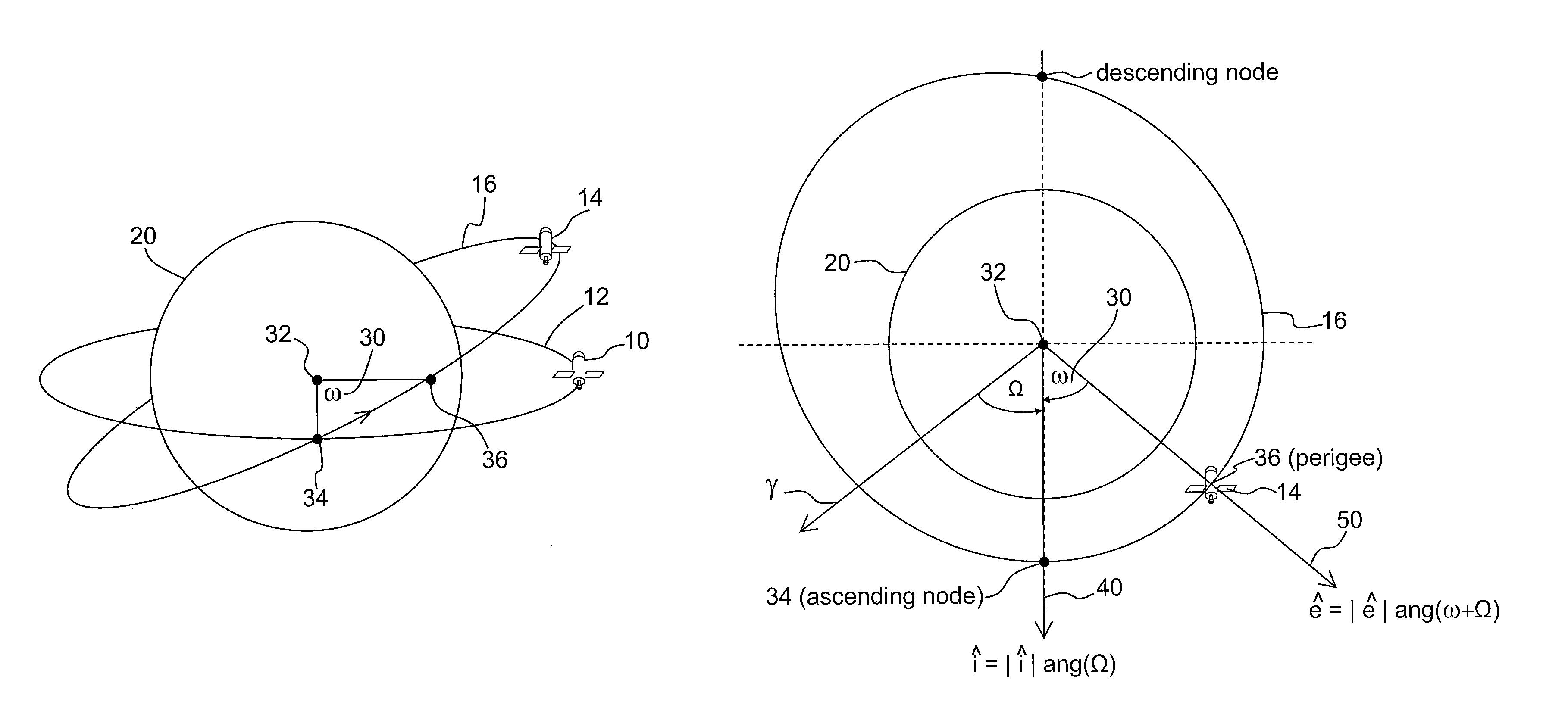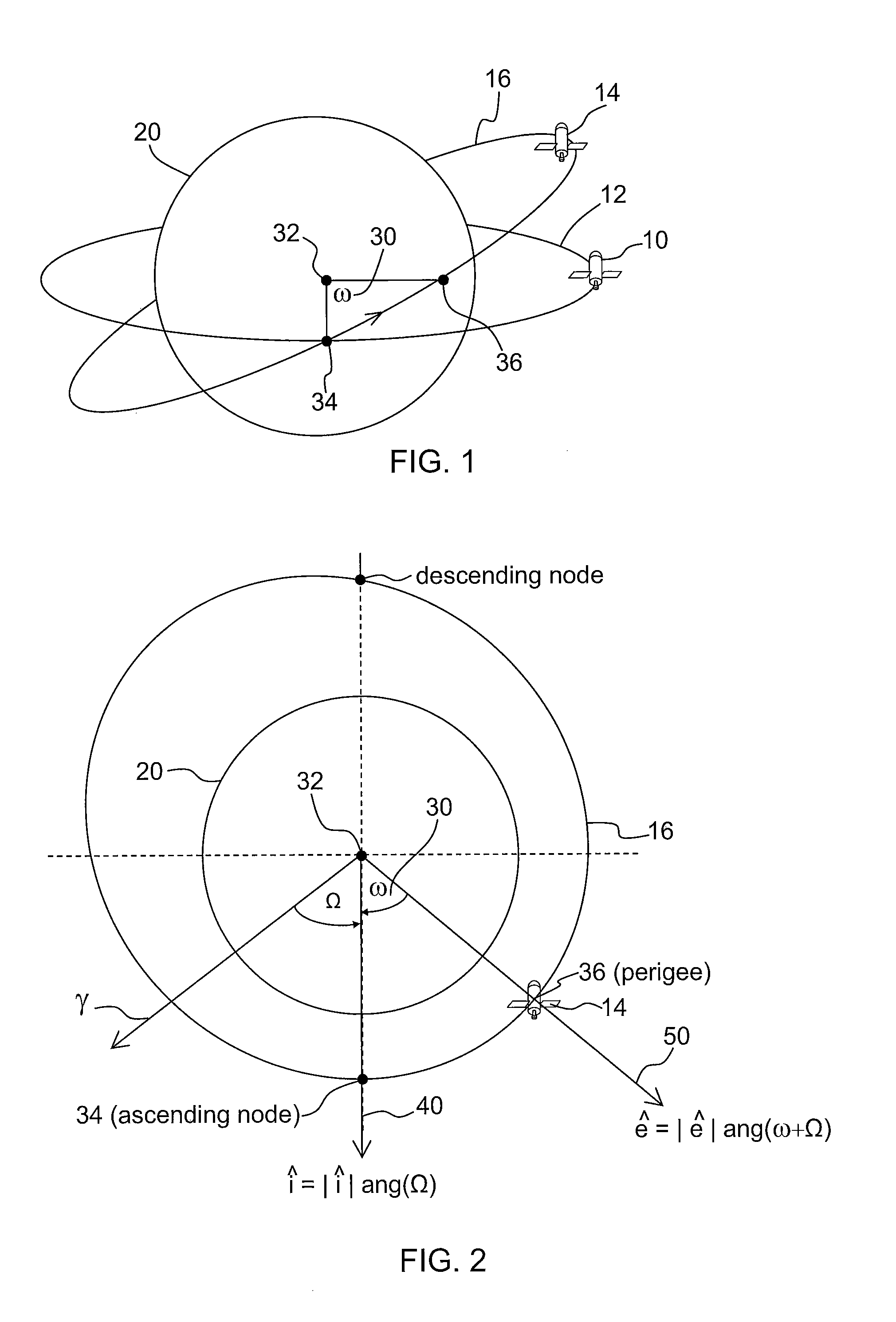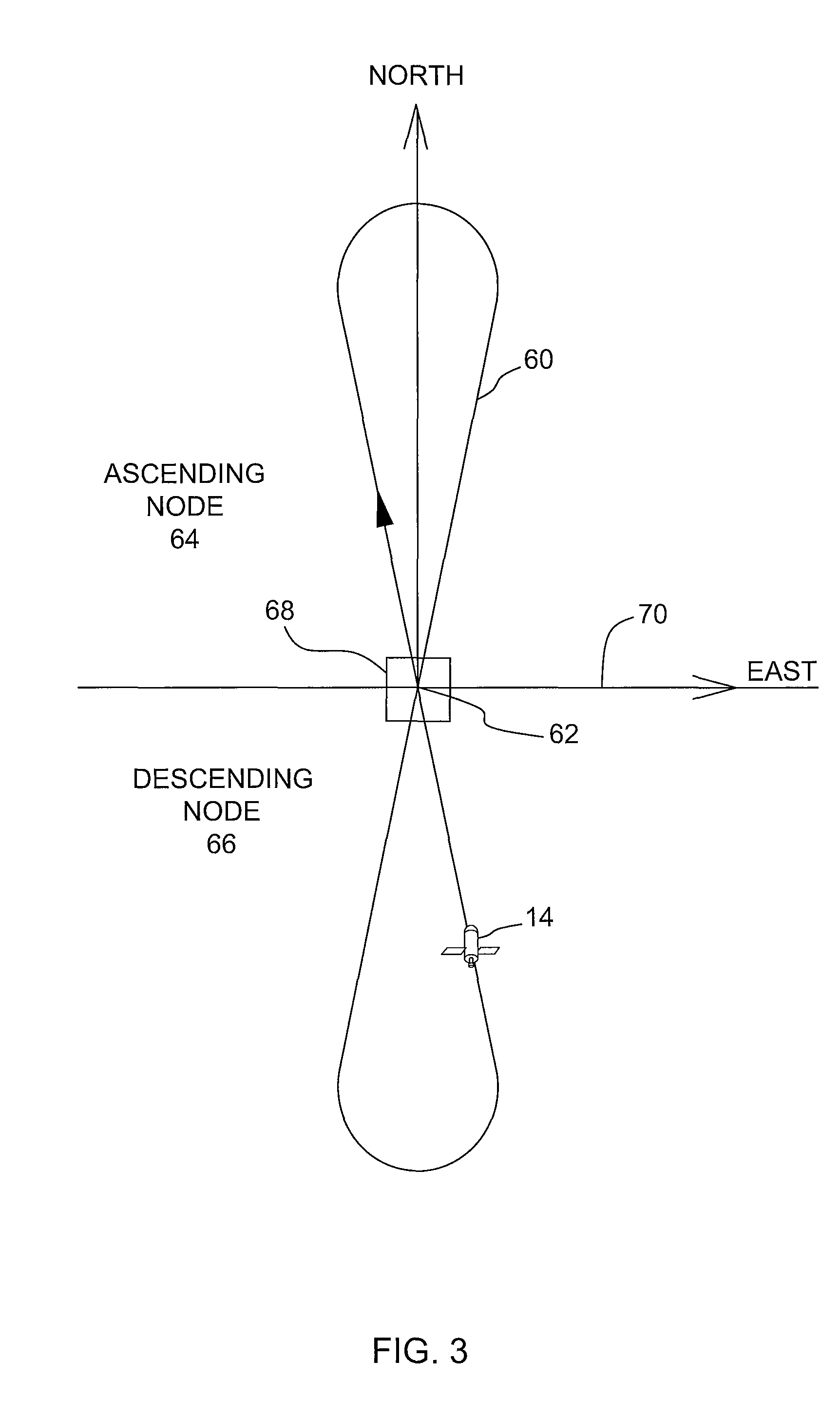Methods and apparatus for node-synchronous eccentricity control
a node-synchronous eccentricity and control method technology, applied in the field of maintaining the position of orbiting satellites, can solve the problems of consuming slot width, difficult to efficiently control eccentricity, and complicated movement of satellites in inclined geosynchronous orbits in practi
- Summary
- Abstract
- Description
- Claims
- Application Information
AI Technical Summary
Benefits of technology
Problems solved by technology
Method used
Image
Examples
Embodiment Construction
[0025]Herein described are methods and systems for performing satellite station keeping for satellites in synchronous inclined orbits which results in a decrease in the fuel required to maintain the desired orbit as compared to the above indicated sun synchronous eccentricity control method. More specifically, an eccentricity vector is managed throughout the life of the satellite based on an inclination vector associated with the satellite. Management of the eccentricity vector provides an advantage over the standard sun-synchronous eccentricity control currently utilized in satellite station keeping, as longitude variation is minimized using much less thruster fuel. In one embodiment, the fuel savings is defined by the ratio, 2 / π, or about 0.6366, which is about a 36% decrease in fuel consumption over the sun-synchronous eccentricity control method.
[0026]FIG. 1 is a diagram illustrating a first spacecraft 10 in a geostationary orbit 12 and a second spacecraft 14 in an inclined geos...
PUM
 Login to View More
Login to View More Abstract
Description
Claims
Application Information
 Login to View More
Login to View More - R&D
- Intellectual Property
- Life Sciences
- Materials
- Tech Scout
- Unparalleled Data Quality
- Higher Quality Content
- 60% Fewer Hallucinations
Browse by: Latest US Patents, China's latest patents, Technical Efficacy Thesaurus, Application Domain, Technology Topic, Popular Technical Reports.
© 2025 PatSnap. All rights reserved.Legal|Privacy policy|Modern Slavery Act Transparency Statement|Sitemap|About US| Contact US: help@patsnap.com



